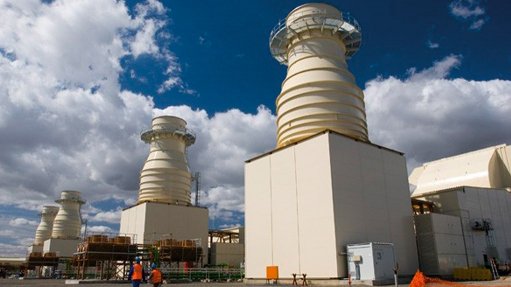
In a recent State of the System update, Eskom indicated that its gas turbine stations Ankerlig and Gourikwa used 148-million litres of diesel in power generation in November 2014. The turbines use diesel fuel in a gasified form.
The National Energy Regulatory of South Africa limit (the maximum energy that Eskom may supply) for gas turbine generation at the time was 450 GWh/month. The two stations together generate 2.084 GWh and, thus, to produce 450 GWh, they would run for 215 hours running.
Eskom fuel consumption figures is 236 000 l/h for Gourikwa and 425 000 l/h for Ankerlig. Running for 215 hours, therefore, translates to 142.7-million litres, as claimed in the Eskom update.
In this scenario Ankerlig would have used about 91-million litres of diesel in November 2014.
Gourikwa has a pipeline to the PetroSA refinery in Mossel Bay. This, with tanker deliveries of three 50 000 l fuel tankers a day and 10-million litres on-site storage would keep the station supplied with diesel fuel.
The question is how the fuel was supplied to Ankerlig.
Allowing for the onsite storage tank of 16.2-million litres the balance of the fuel, around 75-million litres, would have had to be transported to Ankerlig by road tankers. Using 50 000 l as the base case, this would still require 1 500 road tanker trips or 50 road tanker trips a day.
The tanker would need to travel a distance of 40 km from Cape Town to Ankerlig. There would need to be about 30 minutes for loading and 30 minutes for off-loading and one hour minimum for road travel.
If the above is correct, the total of 1 500 tanker trips seems impossible as it would require three fleets of 12 tankers, operating 24 hours a day. This would surely bring traffic on the R27 to a standstill.
However, if the above is not correct, how were Ankerlig and Gourikwa refuelled in November 2014? Did the two stations actually use 148-million litres of diesel? If not, how much did they use?
At the time of publication, Eskom had not replied to these questions.